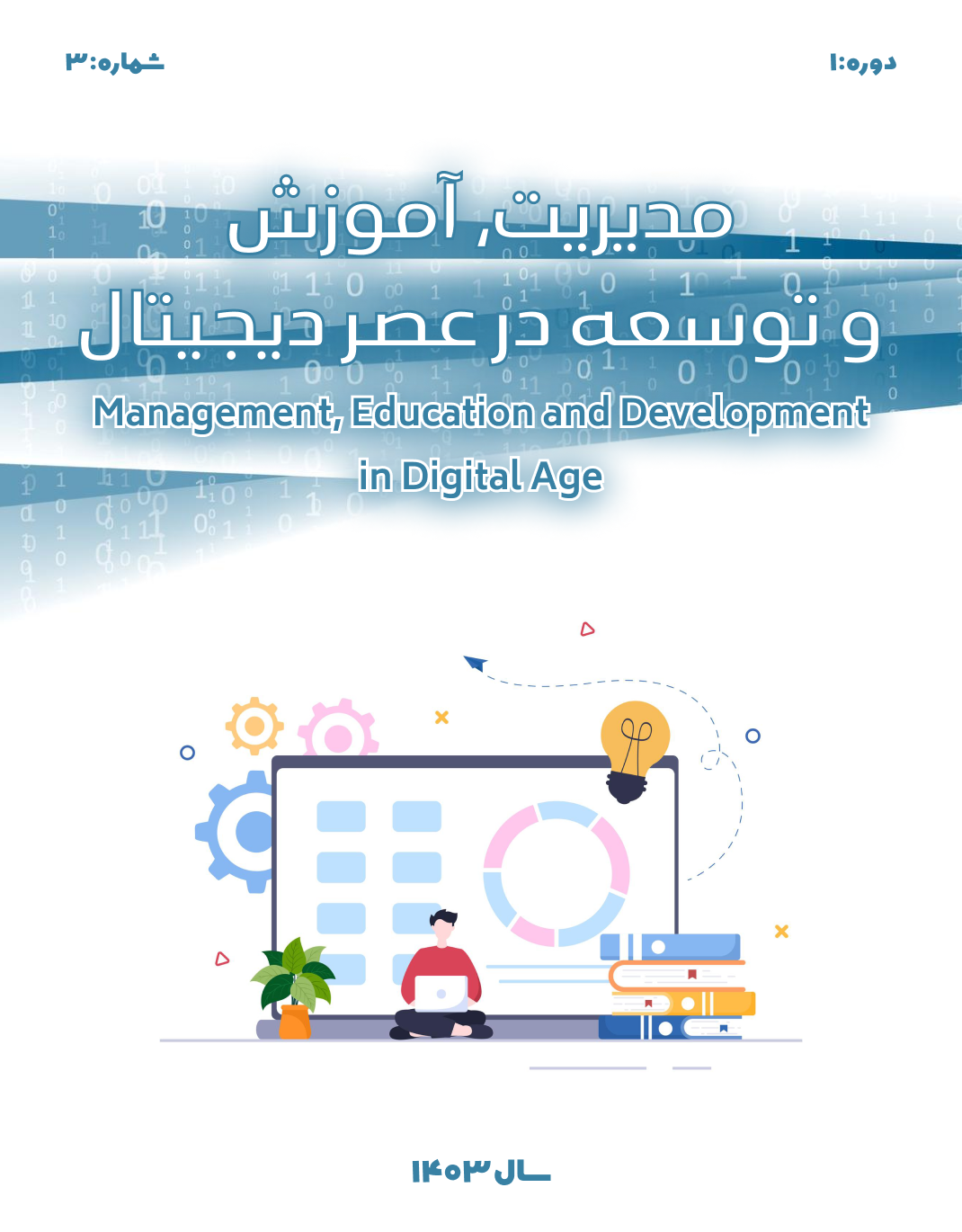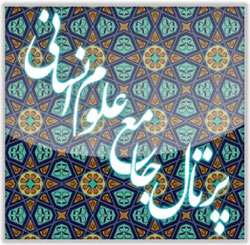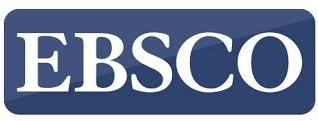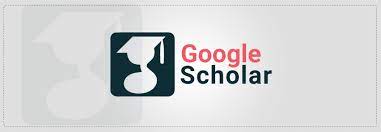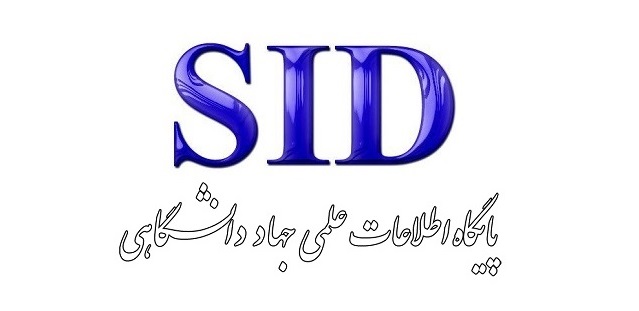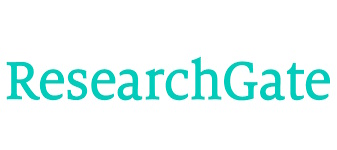A Model for the Development of Professional Creativity among Secondary School Mathematics Teachers in Iraq
Keywords:
Creativity, Professional Creativity, Mathematics Teachers in Secondary Schools in IraqAbstract
The present study was conducted with the aim of proposing a model for the development of professional creativity among secondary school mathematics teachers in Iraq. This research is considered a descriptive-survey study in terms of data collection method, and an applied research with a mixed-methods approach in terms of purpose. In the first phase of the study (qualitative section), the statistical population consisted of education experts and specialists in related fields from the faculties of educational sciences and educational management at universities across Iraq. Using purposive sampling and based on theoretical saturation, a total of 12 individuals were selected as the sample.
In the quantitative section, the statistical population included all currently active secondary school mathematics teachers in Wasit Province, Iraq. Based on the Krejcie and Morgan sampling table and using a combined sampling method (cluster-stratified), 246 mathematics teachers were selected as the statistical sample. The data collection instrument in the qualitative section was a semi-structured interview, whose validity was confirmed through member checking and peer review. In the quantitative section, a researcher-made questionnaire consisting of 51 items was used for data collection. The validity of the questionnaire was assessed based on the opinions of experts and faculty members, and its reliability was confirmed using Cronbach's alpha, which was calculated at 0.870 for the entire instrument. In general, at the descriptive statistics level, frequency distribution tables and charts, mean, and standard deviation were employed. In the qualitative section, coding methods and direct quotations were used, while in the quantitative section, inferential statistical methods such as the t-test and structural equation modeling (SEM) were applied. The software used for data analysis included SPSS, LISREL, and AMOS. According to the findings, the most significant components of professional creativity among mathematics teachers in Iraq were identified under two main dimensions: school-level (6 dimensions) and teacher-level (7 dimensions). These indicators were categorized into two groups: school-level factors (21 indicators) and teacher-level factors (24 indicators). In the structural section, the measurement model for the research variables demonstrated good model fit and was validated.
Downloads
References
Akbari, S., Khorshidi, A., Faghih Aram, B., Salimi, A., & Barzegar, N. (2020). Explaining a Talent Management Promotion Model in Amin Police Sciences University. Police Knowledge Research Quarterly, 22(1), 35-65. https://www.sid.ir/paper/958370/en
Asad, H. R., Mahmoudi, A. H., Shirzad Kibriya, B., & Hamidi Far, F. (2021). Identifying Dimensions, Components, and Indicators for Enhancing Managerial Skills in the Metro Company within a Conceptual and Paradigmatic Model. Educational Management Innovations Quarterly, 16(2), 35-56. https://en.civilica.com/doc/1488587/
Bicer, A., Aleksani, H., Butler, C., Jackson, T., Smith, T. D., & Bostick, M. (2024). Mathematical creativity in upper elementary school mathematics curricula. Thinking Skills and Creativity, 51, 101462. https://doi.org/10.1016/j.tsc.2024.101462
Damanik, J. (2024). Unlocking Teacher Professional Performance: Exploring Teaching Creativity in Transmitting Digital Literacy, Grit, and Instructional Quality. Education Sciences, 14(4), 384. https://doi.org/10.3390/educsci14040384
Hadar, L. L., & Tirosh, M. (2019). Creative thinking in mathematics curriculum: An analytic framework. Thinking Skills and Creativity, 33, 100585. https://doi.org/10.1016/j.tsc.2019.100585
Hamrang, H., Ghanbari Panah, A., Abolmaali Al-Husseini, K., & Sepah Mansour, M. (2019). Explain the relationship between creativity and students' academic adjustment mediated by academic motivation. Innovation and Creativity in the Humanities, 9(35), 60-25. https://journals.iau.ir/article_671556.html?lang=en
Hosseini Largani, S. M. (2019). Designing an Innovative Curriculum Model in Iran's Higher Education System: A Qualitative Study. Research and Planning in Higher Education Quarterly. https://sid.ir/paper/67989/en
Jafarloo, G., Sharifi, N., & Sharifi, H. P. (2019). Presenting a Model for Predicting Creativity Based on Hardiness, Self-Efficacy, Perfectionism, Parents' Education, and Family/Relatives' Creative Background, Mediated by Achievement Motivation in Students. Innovation and Creativity in the Humanities. https://en.civilica.com/doc/930211/
Kasirer, A., & Shnitzer-Meirovich, S. (2021). The perception of creativity and creative abilities among general education and special education teachers. Thinking Skills and Creativity, 40, 100820. https://doi.org/10.1016/j.tsc.2021.100820
Khodabandeh Baigi, I., & Sharifi, S. M. (2021). Assessing the Fit Between Organizational Climate and Creativity Emergence in IRIB News Agency Staff. Interdisciplinary Communication and Media Studies Quarterly, 4(1), 11-44. https://jiscm.iribu.ac.ir/article_132304.html?lang=en
Kong, L. K., & Chang, Y. C. (2019). The effect of teachers' savoring on creative behaviors: Mediating effects of creative self-efficacy and aesthetic experience. International Journal of Educational Methodology, 5(3), 325-335. https://doi.org/10.12973/ijem.5.3.325
Lindawati, M., Wulani, F., & Runtu, J. (2024). The Effects of Servant Leadership, Occupational Commitment, and Work Engagement on Creativity of Teacher. Kinerja, 28(2), 210-224. https://doi.org/10.24002/kinerja.v28i2.9117
Mozaffarzadeh, A., & Abbasi, M. (2022). Investigating the Role of Principals and Teachers in Fostering Student Creativity and Methods for Cultivating Creativity in Schools. Quarterly Journal of New Research Approaches in Management and Accounting, 6(86), 1206-1226. https://majournal.ir/index.php/ma/article/view/1779
Oke, T. I., & Kefas, S. R. (2019). Education and Human Resources Planning for Sustainable National Development in Nigeria. KIU Journal of Humanities, 3(4), 17-25. https://ijhumas.com/ojs/index.php/niuhums/article/view/412
Orkibi, H., & Ram-Valson, N. (2019). Linking trauma to posttraumatic growth and mental health through emotional and cognitive creativity. Psychology of Aesthetics, Creativity, and the Arts, 13(4), 416-425. https://doi.org/10.1037/aca0000193
Paek, S. H., & Sumners, S. E. (2019). The indirect effect of teachers' creative mindsets on teaching creativity. The Journal of Creative Behavior, 53(3), 298-311. https://doi.org/10.1002/jocb.180
Pazin, A. H., Maat, S. M., & Mahmud, M. S. (2022). Factors influencing teachers' creative teaching: A systematic review. Cypriot Journal of Educational Sciences, 17(1), 240-254. https://doi.org/10.18844/cjes.v17i1.6696
Rafles, H., Fadhlan, F., & Asmar, A. (2018). A Strategy of Human Resources Pass through the Education and Training. Adabi: Journal of Public Administration and Business, 1(1), 16-31.
Rahbar, A., Jomeh, S. M., Asareh, A., & Hosseini Dehshiri, A. (2022). Explaining Creativity-Oriented Curriculum Elements for Teacher Education (Synthesis Research). Innovation and Creativity in the Humanities. https://journals.iau.ir/article_692278.html?lang=en
Rashidi, B., Abedi, A., & Norouzi, G. (2022). A Creativity Training Model Based on the SEM Enrichment Model for Gifted Students: A Qualitative Study. Analytical-Cognitive Psychology Quarterly. https://journals.iau.ir/article_696834.html?lang=en
Rastgar, A., Saif, M. H., & Ali Mohammadi Madanlouei, Z. (2018). The Relationship Between Components of Principals' Authentic Leadership Style and Teachers' Positive Teaching Emotions: The Mediating Role of Social Capital. Psychological Journal of School Management, 6(2), 163-185. https://elmnet.ir/doc/2042519-51141
Saeedi, A. (2022). Investigating the Relationship Between Teacher Creativity and Student Creativity. Teacher's Educational Literacy, 2(1), 1-20. https://en.civilica.com/doc/1625725/
Sajjadi, M. S., Shahmoradi, S., & Salimi, M. (2020). The Impact of Robotics Construction Training on Critical Thinking, Creativity, and Math Learning in Lower Secondary School Students in Tehran. Innovation and Creativity in the Humanities, 10(3), 17-40. https://journals.iau.ir/article_668209.html?lang=en
Salimi, M., Jalali, M., & Yousefi Tazakor, M. (2019). Architectural Requirements of Schools With a Focus on Enhancing Students' Creativity and Abilities. Journal of Architecture Studies(192), 185-113. https://elmnet.ir/doc/2212033-14378
Setiawan, R., Mardapi, D., Aman, & Karyanto, U. B. (2020). Multiple intelligences-based creative curriculum: The best practice. European Journal of Educational Research, 9(2), 611-627. https://doi.org/10.12973/eu-jer.9.2.611
Shabani, M., Maleki, H., Abbaspour, A., & Saadipour, E. (2018). Designing a Creativity-Based Curriculum Model in a Corporate University. Curriculum Planning Research Quarterly. https://www.sid.ir/paper/127468/en
Shah Rostam Beig, T. (2022). Identifying and Examining the Components of Creativity. Monthly Journal of Human Sciences Horizons, 6(64), 35-52. https://civilica.com/doc/1882667/
Shariati, M., Shirazi, M., Hosseini Dehshiri, A., & Modarres, M. (2019). Cognitive Variables Inhibiting Creativity Among Medical Students. Journal of the School of Medicine, Tehran University of Medical Sciences. https://tumj.tums.ac.ir/article-1-10218-en.html
Shokoohi Amirabadi, L., Delavar, A., Abbasi Sarouk, L., & Koushki, S. (2018). Content Analysis of the Fundamental Reform Document of Education Based on Creativity and Happiness. Innovation and Creativity in the Humanities. https://www.sid.ir/paper/223415/en
Siregar, Y. (2023). Increasing the Competence of Vocational Education Teachers With 4C Skills-Based Training Management (Critical Thinking, Creativity, Communication, Collaboration). https://doi.org/10.4108/eai.19-9-2023.2340493
Taghvaei Yazdi, M. (2018). The Relationship Between Foresight in Curriculum and Student Creativity. Curriculum Planning Research Quarterly. https://sid.ir/paper/127475/en
Tahvildari, B., Khorshidi, A., Araghiyeh, A., Khosravi Babadi, A. A., & Faghih Aram, B. (2020). Presenting an Effective Training System Model for the Ministry of Oil Headquarters Staff. Quarterly Journal of Human Resource Management in the Oil Industry, 11(44), 343-372. https://en.civilica.com/doc/1718216/
Downloads
Published
Submitted
Revised
Accepted
Issue
Section
License
Copyright (c) 2024 محمد فرید راضی الحکیم (نویسنده); محمد بهروزی; الساعدی خضیر عباس جری, بدری شاه طالبی (نویسنده)

This work is licensed under a Creative Commons Attribution-NonCommercial 4.0 International License.
